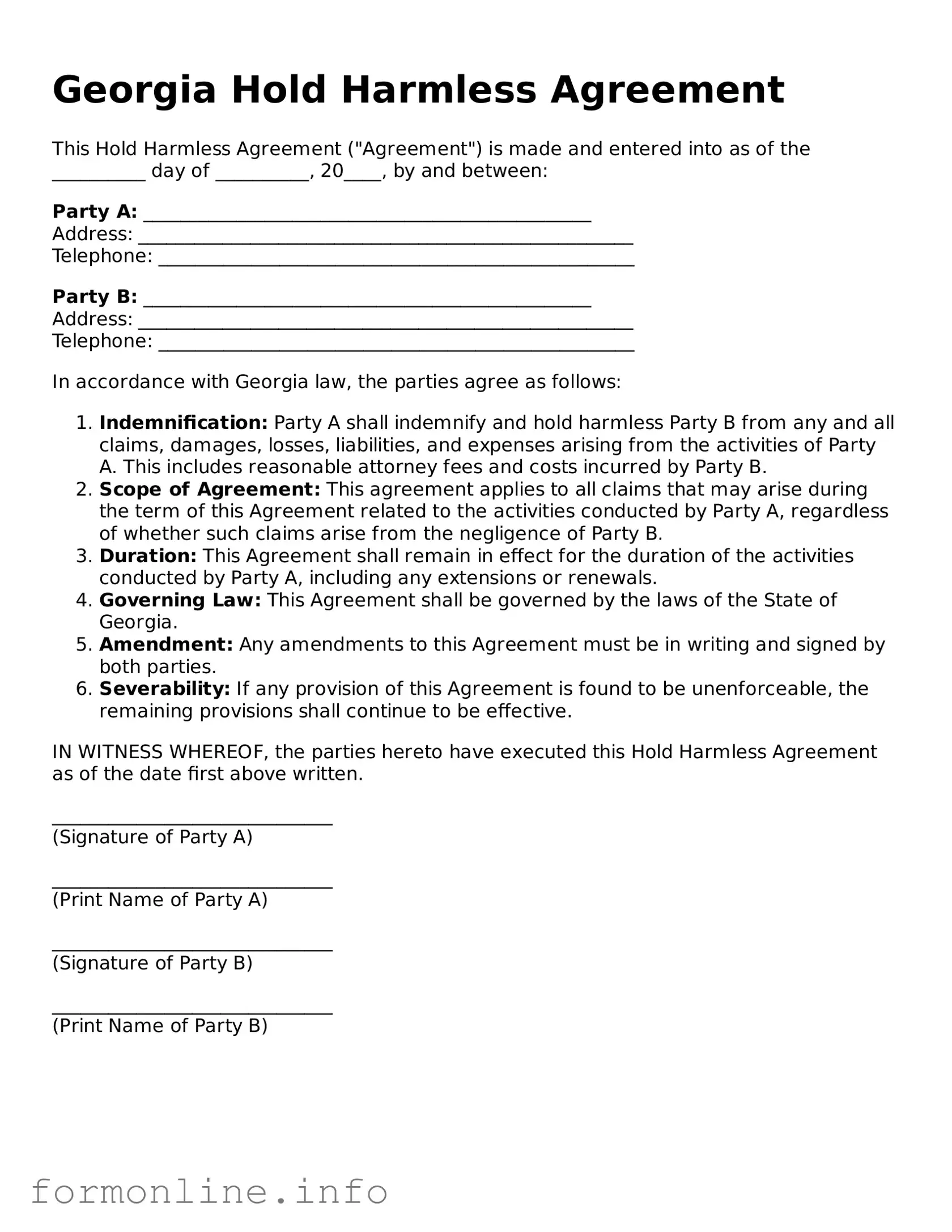Georgia Hold Harmless Agreement
This Hold Harmless Agreement ("Agreement") is made and entered into as of the __________ day of __________, 20____, by and between:
Party A: ________________________________________________
Address: _____________________________________________________
Telephone: ___________________________________________________
Party B: ________________________________________________
Address: _____________________________________________________
Telephone: ___________________________________________________
In accordance with Georgia law, the parties agree as follows:
- Indemnification: Party A shall indemnify and hold harmless Party B from any and all claims, damages, losses, liabilities, and expenses arising from the activities of Party A. This includes reasonable attorney fees and costs incurred by Party B.
- Scope of Agreement: This agreement applies to all claims that may arise during the term of this Agreement related to the activities conducted by Party A, regardless of whether such claims arise from the negligence of Party B.
- Duration: This Agreement shall remain in effect for the duration of the activities conducted by Party A, including any extensions or renewals.
- Governing Law: This Agreement shall be governed by the laws of the State of Georgia.
- Amendment: Any amendments to this Agreement must be in writing and signed by both parties.
- Severability: If any provision of this Agreement is found to be unenforceable, the remaining provisions shall continue to be effective.
IN WITNESS WHEREOF, the parties hereto have executed this Hold Harmless Agreement as of the date first above written.
______________________________
(Signature of Party A)
______________________________
(Print Name of Party A)
______________________________
(Signature of Party B)
______________________________
(Print Name of Party B)
